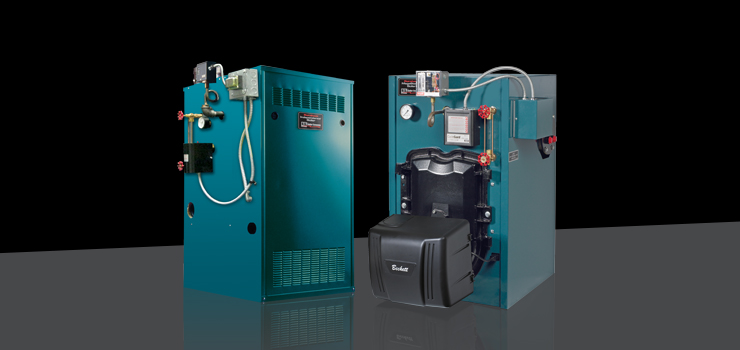 By Ron Beck, Outside Technical Advisor and Manager of Training for U.S. Boiler Company
By Ron Beck, Outside Technical Advisor and Manager of Training for U.S. Boiler Company
Skimming a steam boiler is the process of removing any oil from the water volume. If not completed properly, the presence of oil can cause the boiler to surge, as the water’s ability to flash to steam is affected.
While U.S. Boiler does not use oil in the production of sections, oil can come from the inside of black pipe and also from the threading process.
In my past life, we installed many steam boilers, following the installation instructions to a “T”. When we started doing it by the book, it was a tough transition from our old ways to re-educate ourselves. For years, we never did proper near boiler piping, even though we thought we were. We just did it our way because that’s the way the company had always done it.
Our way worked okay and was easier. Usually after a few trips to the surging steam boiler and re-piping, adding chemicals, trying check valves or just skimming, we were able to resolved most of the problems.
Of course, all these additional trips were not included in the installation price, so it became a financial loss for us. I realized most surging problems can be resolved just by skimming properly.
I finally looked into the skimming procedures. After asking a lot of old-timers, I found that there were many ways to skim a steam boiler. Some seemed to work better than others.
As we gathered the information, there were many similarities between the techniques that the older techs were using. And of course there some differences. We decided to combine all the similar steps and added a few others we had heard.
With some trial and error we found that on most jobs we only had to skim one time and usually only for about an hour or so. We also realized we didn’t need to use chemical additives. Prior to this we always used chemicals after skimming.
If you don’t do much steam work you may ask what surging is? This is when the water level in the gauge glass is bouncing excessively. The bounce should not be more than about 1/2”- 1”. When surging, the water bounce will normally be most of the sight glass and the water can even completely disappear. The water may just keep dropping and disappear without much bounce. Remember this, the action inside the boiler is worse than what you are seeing in the gage glass.
Here’s the proper skimming procedure we used:
1. Turn the boiler on and run it until it gets hot making steam.
2. Turn the boiler off. DO NOT TURN THE BOILER BACK ON DURING SKIMMING PROCESS.This is important. If you fire the boiler again, it will cause turbulence within the steam chest, drawing oiler away from the surface.
3. Only after lifting the relief valve to verify there is no steam pressure in the boiler, find the skim tapping or a plug you can safely remove above the water level. No tapping can be used on top of the boiler, only on the sides. The tapping must be at least 3/4” [bigger is better].
4. Install a nipple with a full port ball valve into the skimming tapping. The valve is a “just-in-case” valve. You won’t close this after the skimming process starts. This pipe nipple must be horizontal, and must come straight out. It cannot elbow up. We are trying to skim the water surface, so the water must come out of a horizontal pipe. There shouldn’t be water at this level yet.
5. Open the valve you installed and hang a bucket on the pipe.
6. Find the manual fill valve. If there is no manual valve you can add the water into the boiler from a low drain valve.
7. Open the manual fill valve until the water starts to flow out of the pipe nipple and valve you just installed. When water starts to flow out the pipe nipple, close the fill valve and wait until the flow stops.
8. Reopen the manual fill valve slightly so the stream of water coming from the pipe nipple is no larger than a wooden pencil. A little faster for commercial boilers. The slower the better.
9. Continue to skim until the bucket is almost full and remove the full bucket and use the second bucket while you dump the first bucket. Do not shut off the valve while doing this. You cannot not stop the water flow once started. Remember – Do not re-fire the boiler.
10. Keep skimming until the water temp falls low enough that you can comfortably keep your hand under the skimmed water flow. I know jobs that were skimmed 2 – 3 hours depending on boiler water volume. Many times this is about an hour on residential boilers.
11. When done, close manual water feed, remove pipe nipple and valve, reinstall, drain water to proper fill level.
12. Turn the boiler switch on. Let the boiler create steam. Did the surging stop or at least improve? Duplicate if needed but normally once is enough. If after two tries there’s no improvement, the problem is not oil. Check near boiler piping, flame impingement, and water pH. Water pH issues can be caused by chemicals added to the boiler.

